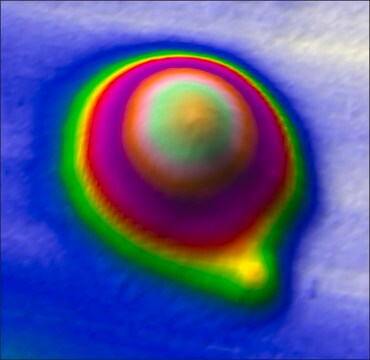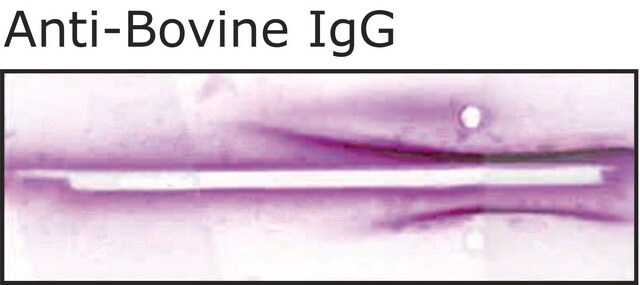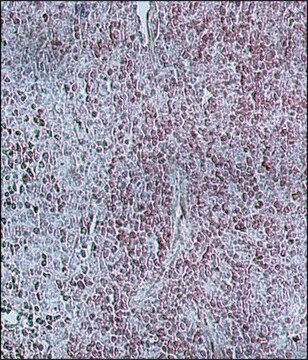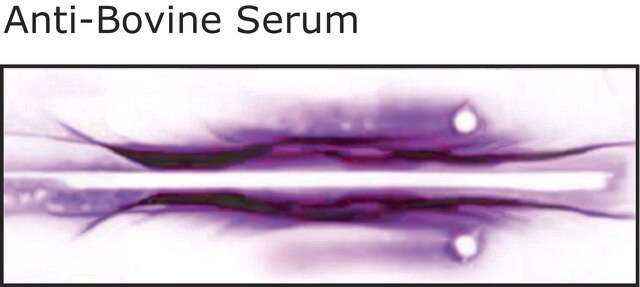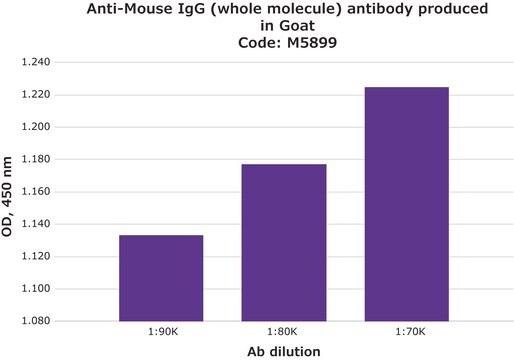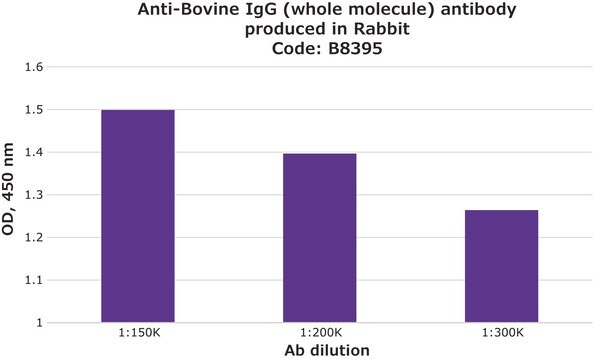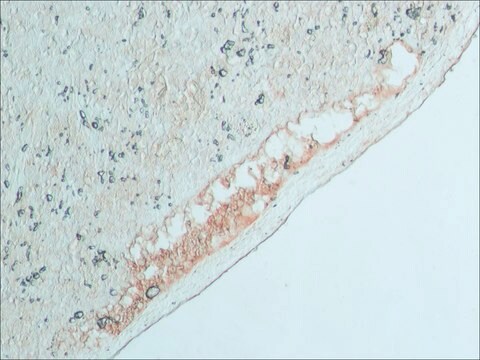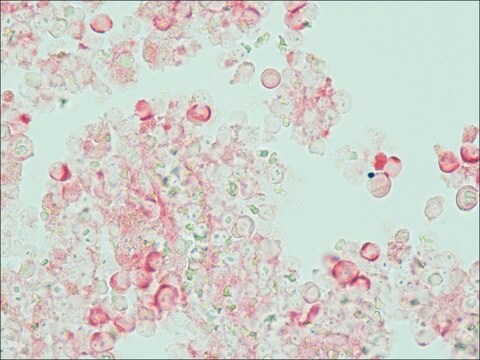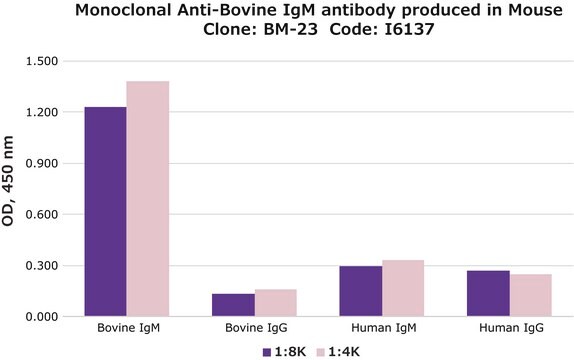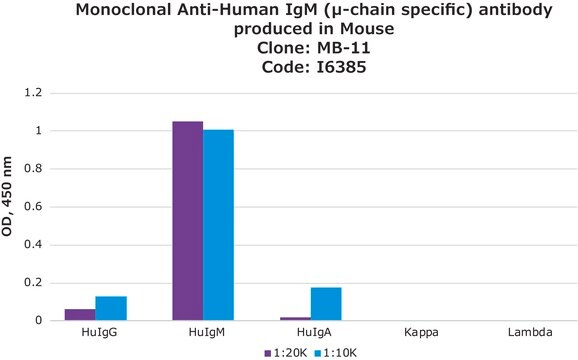B6901
Monoclonal Anti-Bovine IgG antibody produced in mouse
clone BG-18, ascites fluid
Synonym(s):
Monoclonal Anti-Bovine IgG
About This Item
Recommended Products
biological source
mouse
Quality Level
conjugate
unconjugated
antibody form
ascites fluid
antibody product type
secondary antibodies
clone
BG-18, monoclonal
contains
15 mM sodium azide
species reactivity
bovine (non-reactive to IgM)
should not react with
pig, human, rabbit, sheep, cat, guinea pig, canine, horse, goat
technique(s)
dot blot: suitable
indirect ELISA: 1:1000
isotype
IgG1
shipped in
dry ice
storage temp.
−20°C
target post-translational modification
unmodified
Looking for similar products? Visit Product Comparison Guide
Related Categories
General description
Specificity
Immunogen
Application
Biochem/physiol Actions
Physical form
Storage and Stability
Disclaimer
Not finding the right product?
Try our Product Selector Tool.
Storage Class Code
10 - Combustible liquids
WGK
nwg
Flash Point(F)
Not applicable
Flash Point(C)
Not applicable
Choose from one of the most recent versions:
Already Own This Product?
Find documentation for the products that you have recently purchased in the Document Library.
Customers Also Viewed
Our team of scientists has experience in all areas of research including Life Science, Material Science, Chemical Synthesis, Chromatography, Analytical and many others.
Contact Technical Service